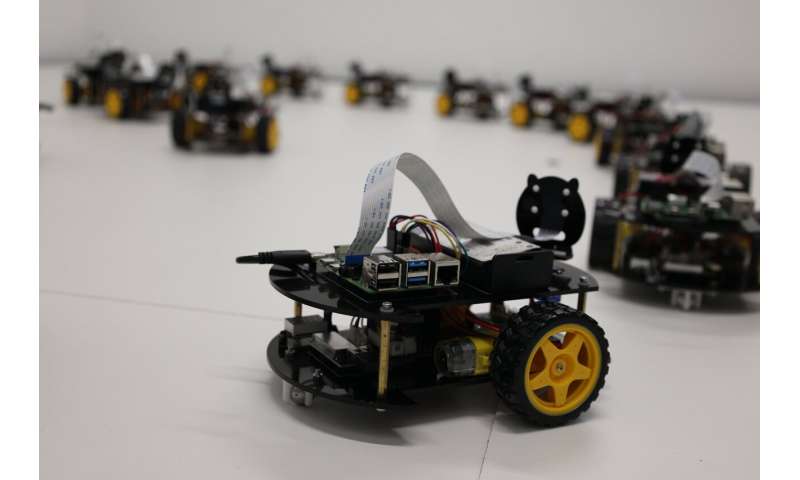'Turing test' for animal systems

What advantages do robots offer in researching the behavioral rules of animal groups? How is robotics research inspired by nature? Three robotics researchers from the Cluster of Excellence "Collective Behavior" (CASCB) at the University of Konstanz provide insights.
"To develop the robots of the future, we want to use solutions that evolution has already found," Andreagiovanni Reina, robotics researcher at the University of Konstanz, uses biological models as a source of inspiration to make robots better.
"Nature often finds the most efficient solution to the problems it faces. And our future autonomous robots may face problems very similar to what some species are also facing, such as finding and sharing resources, transporting objects, looking after the nest, dividing work among team members. Nature is a fantastic source of inspiration because you can find very efficient and smart solutions that use very minimal resources and work very well."
Together with his research colleagues Liang Li and Heiko Hamann, Reina provides insights into the development philosophy of robotics in an interview with the online magazine campus. In their research at the Cluster of Excellence "Collective Behavior," they use robots to study the behavioral rules of animal groups. It is not uncommon for the animals to interact directly with the robots, which become part of the animal swarm.
"My research philosophy or my dream would be to have a RoboTwin of the biological system. If you understand biology better, then you can build better robots. And better robots would help us to better understand biological systems," says Liang Li.
The encounter between animals and robot ultimately shows whether the programmed behavior of the robots appears natural to the swarm of animals—a kind of "Turing test for animal systems."
Heiko Hamann said, "Real beauty is when you see that the artificial swarm and the natural swarm fit together. This might indicate that you have found something—another building block in understanding the behavioral rules of an animal swarm."
Project leader Liang Li is focusing on bioinspired robots, but also looking at how robots inspire biology. Heiko Hamann came to the University of Konstanz as a professor for cyber-physical systems in 2022. And group leader Andreagiovanni Reina joined the Cluster of Excellence "Collective Behavior" in December 2023. His aim is to enhance the field with his theoretical and practical knowledge in collective decision-making and swarm robotics.
Provided by University of Konstanz